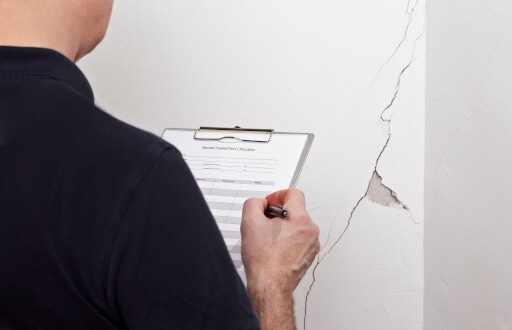What Is an Eviction?
Before we get down to business, let’s discuss what an eviction really is to make sure we’re all on the same page. An eviction is the action of expelling someone, especially a tenant, from a property. If you have found yourself, as a landlord, in a situation where you see it necessary to evict a tenant of yours, then this article is for you! Let’s go over the steps for eviction so you can determine the proper (court-approved) way of evicting a tenant from your rental property.
The Steps for Eviction
It’s not unusual for an eviction to occur – remember, it’s just a part of being a landlord and the business of rental properties. If a tenant cannot pay his/her rent or has broken the lease in one way or another, an eviction is often the next step for a landlord. Though it’s not a topic most of us enjoy speaking to, it’s a necessary evil – so let’s make sure we all understand the proper steps for eviction.
Step One: Understand Eviction Laws
Because eviction laws vary from state to state, it’s important for every landlord to do thorough research into these laws for the specific state(s) he/she owns rental property. Be sure to take these laws into consideration while writing your lease agreements, as well. If you don’t feel comfortable writing the lease agreement yourself, hire a lawyer to do so for you.
Step Two: Have a Valid Reason for Eviction
It’s not wise to start the eviction process without a valid reason for doing so. If you’re curious as to what common (and valid) reasons for eviction are, they include:
- Nonpayment of rent
- Lease agreement violations
- Property damage
- Illegal activity (usually drug related)
- Expiration of lease
If any of these reasons reflect your current situation, then you may proceed with the eviction process. Be sure that you have documented proof of any claim against your tenant – this will be necessary when you bring the eviction case to the courts.
Step Three: Reason with Tenants
If for any reason you feel that the law may not be on your side – maybe if you don’t have a legally-binding lease agreement with the tenant – or you don’t want to deal with an eviction case, you may want to try reasoning with your tenant(s). If you have a decent relationship with them, then the tenant may appreciate your attempt and agree to leave the property without any further effort. It’s best to be understanding of the tenant’s situation while still maintaining a sense of seriousness about their inability to pay you rent. Try doing this in a public location rather than in the rental property itself.
However, if the tenant does not agree to your reasoning, do not take matters into your own hands. A “self-help eviction” is illegal no matter what state you live in. To keep yourself out of trouble, do not remove the tenant’s belongings from the property, lock the tenant out of the property, shut off the tenant’s utilities, or physically urge the tenant to leave in any way.
Step Four: Give a Formal Notice of Eviction
If reasoning with your tenant has been unsuccessful, then unfortunately, they’ve left with you no choice. It’s time to give a formal notice of eviction. Your eviction notice should:
- Include a date by which the tenant must pay rent or move out
- Include the monetary amount that is owed by the tenant to the landlord
- Be given to the tenant a certain number of days (check with your local laws) before filing eviction paperwork with your local court
- Be put on the tenant’s front door as well as sent through the mail (make sure you get a receipt for this notice from the Post Office)
Though eviction notices aren’t pleasant, it’s a necessary step if you’re unwilling to have this tenant remain in your rental property. If nothing has changed by the date provided on the eviction notice (meaning that the tenant has not paid or moved out), then you may file the eviction with the courts.
Step Five: File the Eviction with the Courts
This is where things get serious. If you want to file the eviction with the courts, you’ll need to take a trip to your local courthouse. You’ll be asked to pay a fee, and then you’ll be given a scheduled hearing date. The clerk will ask that you show proof (a receipt from certified mail that you sent the eviction notice) that you gave the tenant the legal amount of time the state requires for an eviction notice. The court will notify the tenant through a summons, so don’t worry about notifying the tenant yourself.
Step Six: Prep for and Attend the Court Hearing
The court hearing is your one chance to prove your claim that the tenant needs to be evicted from the property. Be honest about the situation and let your documentation and evidence on the situation prove your point. You’ll need to bring the following items to your court hearing:
- The original signed lease agreement
- Any bounced checks or payments
- All payment records
- Phone and email records between you and your tenant (to prove you communicated with them)
- A copy of the written eviction notice provided to your tenant
- A dated signature from the tenant or receipt from USPS proving that the tenant was given proper notice
Step Seven: Evict the Tenant
If the odds are in your favor during your court hearing, then the judge will inform your tenant of how much time they have before they need to leave the property. This can be anywhere from 48 hours to one week, depending on your local laws. If the tenant does not vacate the property in a timely manner (before their time is up), then you’ll need to contact your local authorities to escort the tenant from the property and remove all of their belongings from the property and onto the curb. Though things may not always come to this, it happens – so prepare yourself for the worst.
Step Eight: Collect Any Past-Due Rent
In order to collect the money you are owed in past-due rent, you’ll need to file a small claims lawsuit to pursue the rent money. The judge will likely rule in your favor, and if this is the case, then you may give the tenant’s employer (if they have one), the formal court order. This is where the phrase “garnish wages” comes into play – this requires the employer to garnish the tenant’s wages. This means that you, the landlord, will be paid before the tenant is paid for their work in order to pay the tenant’s rental debts.
How to Avoid Future Evictions
If you’re hoping to avoid evictions in the future (which I’m sure you are), you can help yourself by thoroughly researching potential tenants before approving their rental applications. This includes background checks, credit checks, employment records, and rental history. Luckily Apartments.com makes it easy to screen tenants, get the information you need, and find a qualified renter fast. Unlike our competitors, who use various third-party resources to collect information, we partner with TransUnion to provide you with screening reports for evictions, credit, and criminal history. Another feature you’ll find only on Apartments.com is support for co-signers, guarantors, and co-applicants. If you need more information to make a decision, you can request supporting documents from potential tenants directly on our platform. Get all the information you need to find the right tenant quickly and easily. Be sure to ask for references from current and past employers, as well as previous landlord or property manager references. There’s nothing more helpful than reaching out to the tenant’s former landlord or property manager to see how their rental experience was with this specific tenant. Once you’ve gathered all of the information you can about the tenant, then you can decide if they seem like a strong rental candidate. It’s better to be safe now rather than sorry later!











